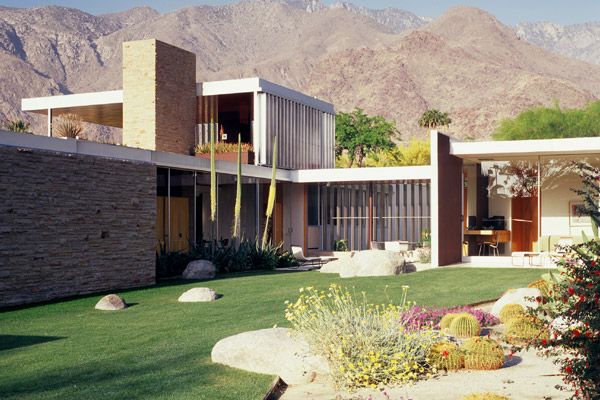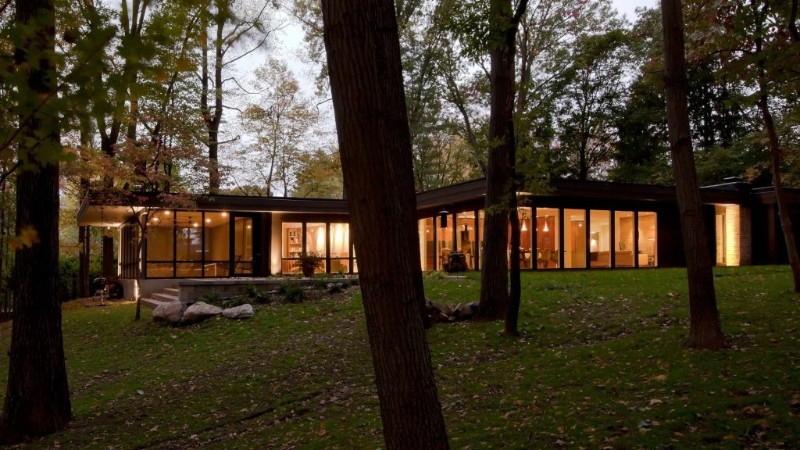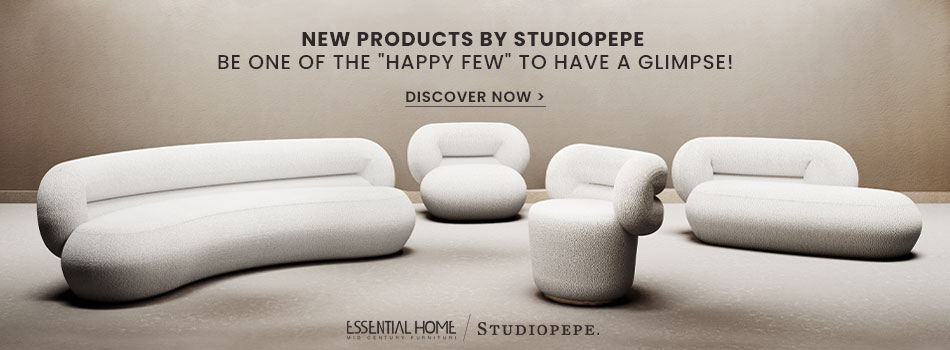Learn everything you have to know about mid-century modern architecture below!
“Architecture starts when you carefully put two bricks together. There it begins”. Ludwig Mies van der Rohe was the one who started this, but it could have been easily said by any other giant in the architecture scene. Since the beginning, we felt the need to take cover and create a place to call our own, a place of comfort. This evolved into an actual art form and nowadays we witness some of the biggest architectural pieces of modern time. We feel so passionately about this subject that today we are going to tell you everything you need to know about mid-century modern architecture!
SEE ALSO: THIS IS WHY MID-CENTURY DECOR IS TRENDY RIGHT NOW!

Architecture is and has always been a reflection of the times we are living in. The lines, shapes, and dimensions, as well as the materials, keep changing, trying to adapt to our ever-evolving world. During the mid-twenty century, architects were trying to reach something new, something different. The great architects of the 1940s and 1950s believed their forward-looking style could be a vehicle for social change to create a better society. In fact – fun fact – it was during this time that the public garages started to appear, trying to mirror that social change.
| |
Europe was where it all began, in the north, where Scandinavian furniture also first saw the light of day. Architects such as Eero Saarinen or Arne Jacobsen were at the forefront of this movement. It quickly made its way across the ocean into American lands, where it immediately received a wide and warm reception, especially in the West Coast, where Palm Springs would come to be the pinnacle of everything mid-century: mid-century design, mid-century homes, and mid-century inspiration overall.
How do I recognize the mid-century style?
1. Flat Planes

It’s very easy to notice that most of these homes have very regular and rigorous geometric lines. One of the most regular features of them all is the roofs. It’s very common to see flat planes, and they instantly became one of the most popular features in mid-century homes, making them truly iconic.
2. Large windows

Sliding-glass doors and other expansive panes of glass allowed light to enter rooms from multiple angles. Natural light was extremely important in mid-century modern architecture and so the design of the house brought that mix of nature with indoors.
3. Changes in elevation

Small steps going up and down between rooms creates split-level spaces, even if the rooms’ height differs just a few inches. A mid-century modern home usually has partial walls, or cabinets of varying heights to create different depths in the space.
4. A bond with nature

Mid-century modern houses are usually located in areas with a lot of natural surroundings. To enjoy this advantage, rooms have multiple outdoor views, or multiple access points, encouraging an appreciation of healthy living, mirroring a very northern-European way of living.
These are the mid-century architects you need to know!
Eero Saarinen
Eero Saarinen was a 20th-century Finnish American architect and industrial designer noted for his mid-century modern and neo-futuristic style. Some of his most famous works include the now-closed TWA Terminal at the JFK airport, as well as the Gateway Arch in St. Louis, Missouri.
Alvar Aalto
Alvar Aalto’s career is reflected in the styles of his work, ranging from Nordic Classicism to a rational International Style Modernism during the 1930s to a more organic modernist style from the 1940s onwards.
Arne Jacobsen
Arne Emil Jacobsen was a Danish architect and designer, probably best remembered for his contribution to architectural Functionalism. His works are mainly located in the North of Europe, with a very typical mid-century design.
Mies Van Der Rohe
Ludwig Mies van der Rohe was a German-American architect. Along with Le Corbusier, Walter Gropius and Frank Lloyd Wright, he is widely regarded as one of the pioneers of modernist architecture. One of this most notable works has to be The Farnsworth House, which is probably one of the most famous houses in the world.
Richard Neutra
Richard Joseph Neutra was an Austrian-American architect. Living and building for the majority of his career in Southern California, he came to be considered among the most important modernist architects.
Getting to know Palm Springs
As we have stated earlier, Palm Springs is the pinnacle of mid-century modern architecture and overall design. For some reason, the rough landscape of the Californian region served as an inspiration to many architects, which decided to site their creations in the desert lands of Palm Springs. The minimalist style of the mid-century modern homes ended up creating a stunning contrast with the arid plains and mountains all over the region, creating those dreamy and uncanny ambiances we are now so familiar with.
Check out our gallery to see some of our favorite mid-century Palm Springs inspirations!
READ MORE: PROOF THAT YOUR HOME IS LACKING A MID-CENTURY SOFA
WE HOPE YOU LIKED OUR ARTICLE ON MID-CENTURY MODERN ARCHITECTURE. YOU CAN ALWAYS FOLLOW US ON THE GO! FIND US ON PINTEREST AND DON’T MISS A SINGLE THING.



















